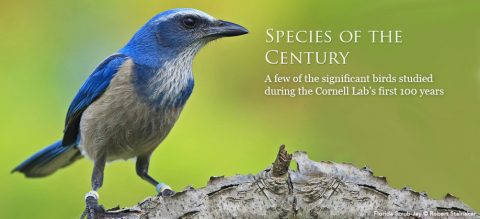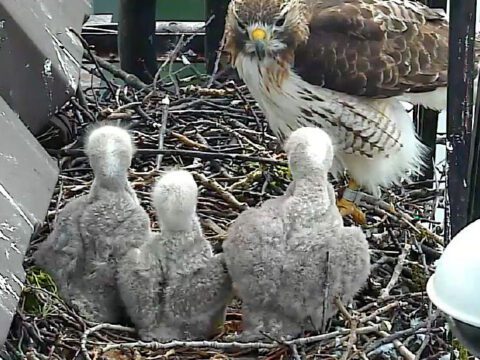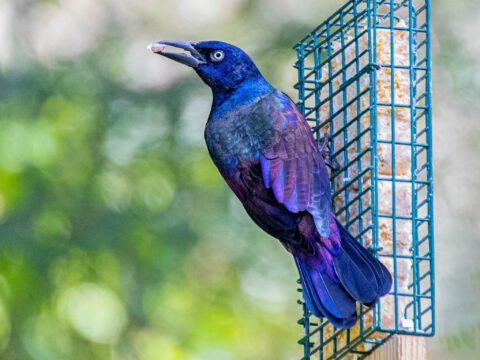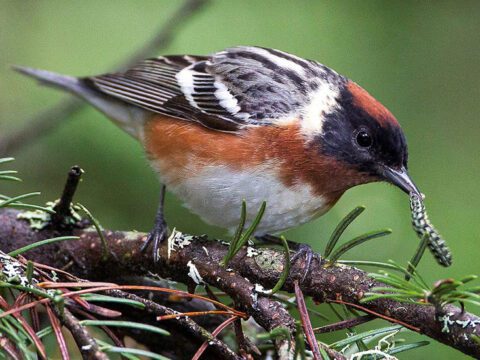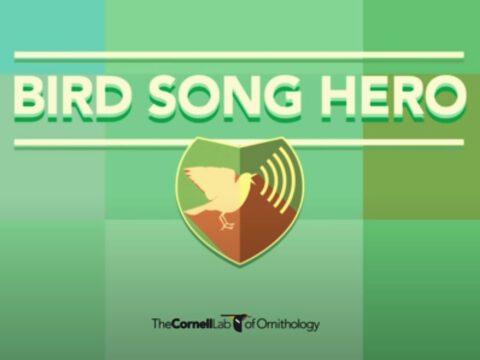Citizen Science in the Digital Age
By Miyoko Chu and Rick Bonney
From the Winter 2015 issue of Living Bird magazine.
January 15, 2015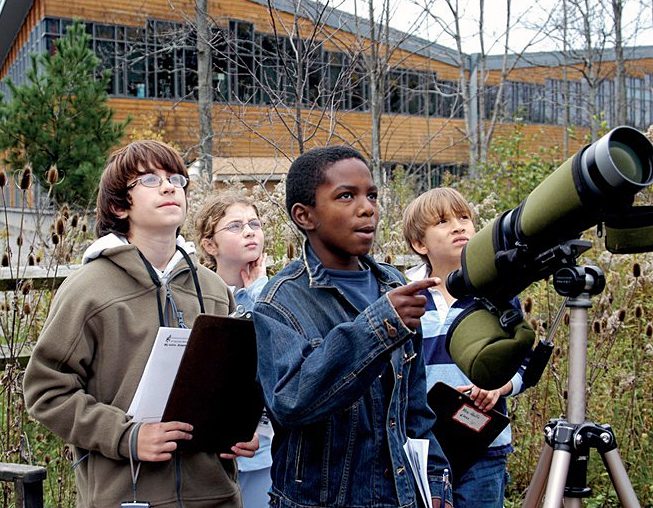
In 1998, three guys in a trailer were the first to witness a remarkable turning point for citizen science. The trailer was the makeshift home of the Cornell Lab of Ornithology’s Internet operation across from the Lab’s original building, which had grown too small to accommodate all of its staff. Steve Kelling, Tom Fredericks, and Roger Slothower had worked throughout the winter to develop a new online application, maps, and database for the “Great ’98 Backyard Bird Count,” an experiment to see what would happen if the public could record online—and see within minutes—their bird sightings from across the United States and Canada.
Slothower switched on the website at midnight on February 20. The next morning, the three developers crowded around a monitor. They were thrilled to see bird sightings pouring in from around the continent. By the end of the three-day count, participants had logged 13,587 checklists. The power of enabling bird watchers to record their sightings with online technology was clear. The Great Backyard Bird Count has grown every year since; in 2014, participants documented half of the world’s bird species in just four days.
The count’s success also convinced the National Science Foundation to fund a new “anywhere, anytime” project, called eBird, in 2002. Since then, eBirders have contributed a staggering 200 million bird observations, with another 100 million expected before the end of 2015. Researchers have published more than 100 scientific papers using eBird data. They have tackled the massive data sets using new statistical and machine learning techniques and tens of thousands of hours on high-performance computers typically used in physics and astronomy research.
In two of the most recent papers, published in the Proceedings of the Royal Society B and Journal of Biogeography in 2014, Cornell Lab scientist Frank La Sorte and colleagues studied the migratory routes of birds, using more than 1.7 million eBird checklists and satellite imagery. The results showed that many birds follow a so-called “green wave” of new leaves and insects in spring rather than taking the shortest route. In fall, they make fewer detours for food, instead choosing routes that avoid severe headwinds on their journeys south.
When reflecting on the groundbreaking advances in citizen science in recent decades, André Dhondt, director of the Lab’s Bird Population Studies program, said, “It was clearly a gamechanger when it became possible to submit data online. The other really big change has been the widespread acceptance of the validity of citizen-science data.”
Dhondt recalls when he approached a funding agency 20 years ago to involve bird watchers in studying the effects of forest fragmentation on birds. “The funder challenged the idea that it was possible to collect rigorous scientific data with citizen scientists,” Dhondt said. “Citizen-science data were not considered to be a credible source to influence policy decisions.”
The Lab’s scientists had a different take. Citizen science had been a key part of the Lab’s mission since 1965, when it launched the Nest Record Card Program. In 1987, the Lab joined forces with Ontario’s Long Point Bird Observatory to establish Project FeederWatch in the United States and Canada. During the next 20 years, the Lab developed not only the Great Backyard Bird Count and eBird but also Project PigeonWatch, Project Tanager, Birds in Forested Landscapes, Golden-winged Warbler Atlas, Cerulean Warbler Atlas, NestWatch, and Celebrate Urban Birds. Using rigorous science, the Lab’s researchers have combined observational data with other data sets ranging from satellite imagery of the earth to the DNA sequences of microbes—sometimes yielding surprising discoveries.
For example, while analyzing data from the Birds in Forested Landscapes project, researchers struggled to understand what was happening with Wood Thrushes. “It was an enigma,” said Cornell Lab scientist Wesley Hochachka. “Every thrush species that we looked at— Hermit, Swainson’s, Veery—was tied to large patches of forest, but the Wood Thrush, the stereotypical forest thrush across eastern North America, didn’t show the effects of fragmentation, which was just weird.”
A pattern emerged only when graduate student Stefan Hames and colleagues included data on soil acidification. Although the data were coarse, the signal was clear. Wood Thrushes were absent in the areas most affected by acid rain, even in large forest patches. “It was a double whammy,” Hochachka said. “It turns out that no matter where the birds were, they just couldn’t win.”
Because acid rain leaches calcium from soil, the scientists speculated that a shortage of calcium-rich prey such as slugs and snails might interfere with Wood Thrushes’ ability to produce healthy eggs or young. In 2002 they published their results in the Proceedings of the National Academy of Sciences. The study provided important documentation of one of the many impacts of acid rain on environmental health—and the combined effects of pollutants and habitat loss on a species that had declined by half since 1966.
Citizen science was also at the heart of another unforeseen discovery that led to more than 20 years of investigation on an emerging disease. In 1994, bird watchers near Washington, D.C., reported House Finches with red, swollen eyes. The culprit was a new strain of a bacterium, Mycoplasma gallisepticum, which had jumped from domestic turkeys and chickens to songbirds. Recognizing that bird watchers could track the emerging disease, Dhondt and his team sent forms by postal mail to 9,000 FeederWatchers in the eastern United States, asking them to record whether House Finches were healthy or sick. “In a few weeks we had received 3,000 replies, which was absolutely astounding,” Dhondt said.
By the next year, participants were reporting sick House Finches along the Atlantic Seaboard from Maine to Georgia. Two years later they had tracked the disease west to Oklahoma. By 2004, it had reached the West Coast. Scientists estimated that the disease had reduced House Finch populations in the eastern United States by 60 percent.
The researchers soon realized that the spread and impact of the disease were affected not only by behaviors of the birds but also by the rapid evolution of the bacterium.
With grants from the National Science Foundation and National Institutes of Health, Dhondt assembled a team of researchers and students from multiple universities to investigate the disease and its evolving virulence. Field ecologists collected samples from House Finches and observed them in the wild. Mathematicians modeled the dynamics of the epidemic. Veterinary pathologists and immunologists studied how the genetics of House Finches influenced disease resistance. Microbiologists sequenced the entire genome of several strains of the bacterium, looking for regions that would enable the pathogen to become more deadly or to jump from host to host. The effort now represents one of the most detailed studies ever conducted of a naturally emerging infectious disease.
Citizen-science participants have also fueled research on the ever-changing distribution, abundance, and migrations of birds. Land managers, federal agencies, and nonprofits have used these data for on-the-ground conservation efforts. These successes have also inspired efforts in other disciplines. Citizen-science projects today number in the thousands, exploring myriad topics such as native bees, the spread of invasive plants, the timing of plant blooming, and air and water quality. In addition to supplying critical data about the environment, participants learn about the natural world and the process of scientific investigation.
In a sign of how far citizen science has come in the past few decades, in 2014 the Lab worked with partner organizations to establish a new Citizen Science Association to support practitioners in creating the best possible projects. Citizen science also was added to the Oxford English Dictionary in 2014, recognizing the significance of this burgeoning field to science and society.
Scientists at the Lab are now working toward the day when predictions of bird migration based on citizen-science data will become as ubiquitous as weather forecasts. They envision a growing corps of bird enthusiasts around the world contributing data at volumes great enough to serve as a global monitoring system for the conservation of birds. Such a vision, though ambitious, may be within reach during the next century, considering the paths that bird watchers have already trailblazed for citizen science.

All About Birds
is a free resource
Available for everyone,
funded by donors like you
American Kestrel by Blair Dudeck / Macaulay Library
